Last Wednesday, the conditions lined up just right for a full coverage of Plum Island. Our initial trip southward and through the Parker River National Wildlife Refuge was uneventful, until we were interrupted by a Rough-legged Hawk foraging low and near our edge of the marsh in the S-curves. Views of the bird there were spotty but dramatic, as it was close but moving behind the thickets. Those in the van bringing up the rear had fabulous looks at this light-morph Rough-legged Hawk as it perched in a nearby tree at the edge of the marsh. The pannes, which the day before had hosted some nice dabbling ducks, had frozen over, and not much else was stirring.

We paused at Cross Farm Hill to see if any of the now-famous Short-eared Owls were roosting in view, but no birds were visible at that moment. We did find a collection of people waiting there, hoping, we presume, to take photos of the bird(s). We have been hearing that on some days this has become quite common: crowds park along the side of the road for long periods as they wait for owls to appear. Such human behavior can be disturbing to wildlife.
As it happens, that particular site may actually be a place where the regular, ongoing presence of hopeful photographers has little effect on owls or other wildlife. Short-eared Owls roost on the ground in the marsh, and usually are more or less invisible to us. The habitat at Cross Farm Hill is big and open, so if the people there are perceived as a disturbance by the owls, it may be that the owls can find plenty of other good places to go. Still, it’s important to realize that the habit of “camping out” at known owl roosts often has a horrible effect on both owls and on the ability of other people to enjoy them. We birders dearly wish that photographers would adopt similar ethics to those we encourage in the birding community.

A good protocol to follow is: go see if an owl is there, wait a bit, and then move on. Come back for short periods if you must, but we humans must try not to turn owl roosts into a carnival of bipeds. In the case of tree-roosting birds, crowds of people may disturb the birds to the point that they abandon a good roost. Or, land-owner “hosts” might become annoyed enough to shoo the roosting birds away to be done with the swarming audiences. A well-known roost tree in West Newbury was cut down for that reason. In addition to destroying the very thing that people hope to enjoy, the habit of staying for long periods at a roost degrades the experience of seeing the birds in an undisturbed natural setting. There is no firm guideline here. Moderation and common sense should prevail. We know that things can get really busy with hordes of spring birders for long stretches at famous spots on Plum Island in May. However, if all of us remember to discreetly move along, we will have the best chance of respecting the resource.
Back to our report! The sea at Emerson Rocks was smooth with nice, regular waves arriving to break on the rocks and shoals. Common Eiders were the most noticeable in the cove, though two pairs of Horned Grebes eventually revealed themselves, sometimes quite near to shore. Scoters were in short supply, but some White-winged and a few Black Scoters did eventually show up, along with some Long-tailed Ducks and a Common Goldeneye. There must be better beds of clams and mussels elsewhere this winter.
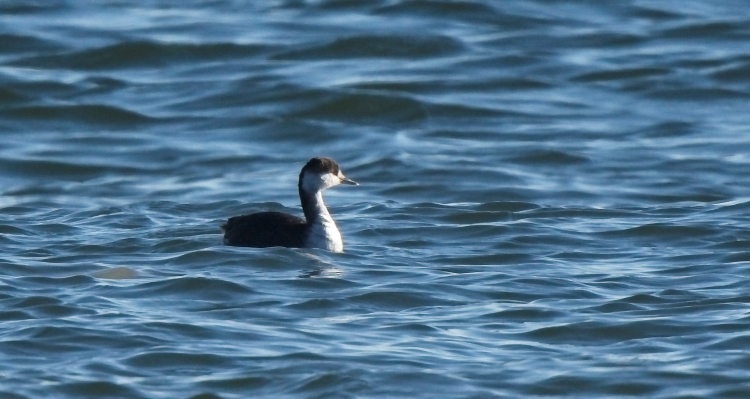
We checked on the mouth of the sound at Sandy Point State Reservation. While not too much was out on the water, we did find a flock of a dozen or so Horned Larks foraging around in the wrack and low vegetation of the just-above-high-tide zone. Many of us found positions where the light was behind us, so we could really see and enjoy the unusual behavior the larks exhibit, walking about in a kind of sneaky way in the grasses and sand, poking here and there for seeds. It was hard to break away, as the birds seemed oblivious of us. But we had more ground to cover, and we headed north.
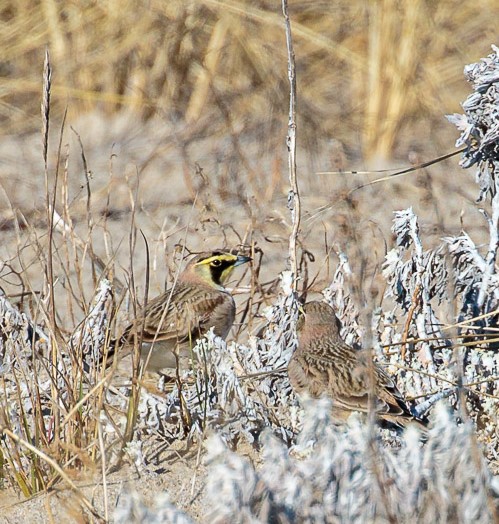

While there were geese to examine for anomalous species in the south marsh, things did not pick up until we reached South Field, where a Rough-legged Hawk was putting on a master class in hovering and kiting above the thickets. We followed this bird all the way to Hellcat, where very little else was doing. We watched the arctic hawk move out over the sound and then back across the marsh along North Pool. After picking up one wintering Yellow-rumped Warbler near the parking lot, we caught up again with the Rough-legged Hawk at North Field. We had the time and wanted more birds, so we decided to continue north and finish the day at the mouth of the Merrimack River.
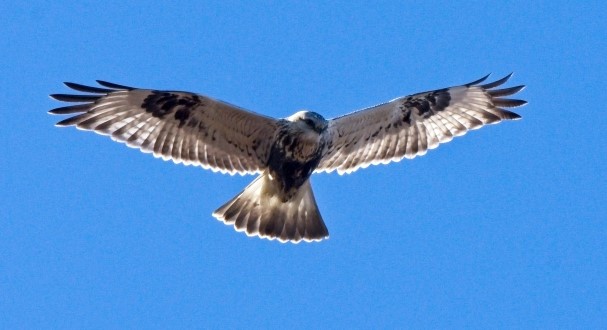
What a good decision! A sleeping Common Loon, plenty of White-winged Scoters, and soon a Red-necked Grebe made the end of the outing exciting. Common Eiders of all plumages ranged in big rafts and scattered around the river mouth, and Long-tailed Ducks foraged in and occasionally flew over the strong current. The close proximity of the grebe and the snazzy plumage of the male White-winged Scoters, seen in good light, made for a very satisfying conclusion to our end-to-end search for birds on Plum Island. Next week we will be in our neighborhood again, then off to Cape Ann on February 12.

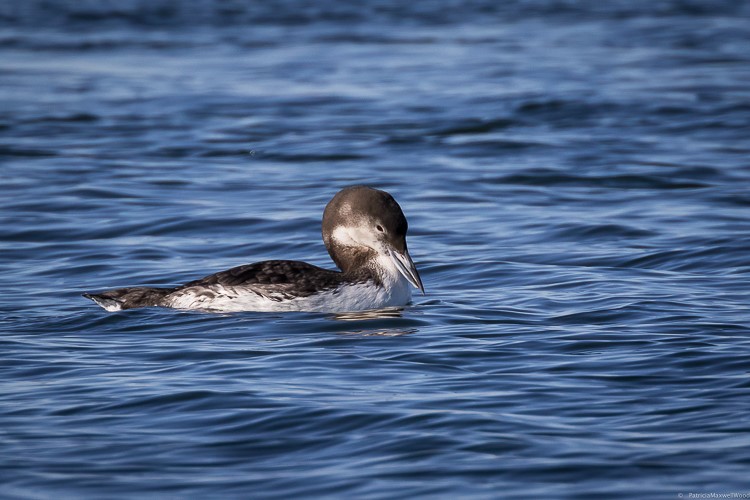
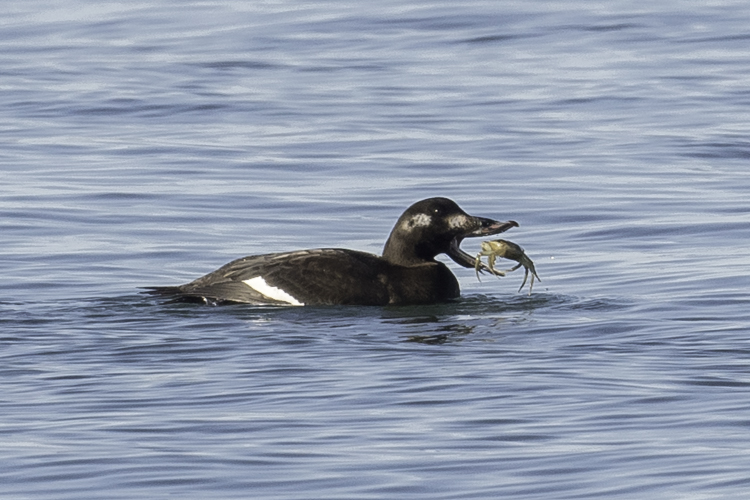
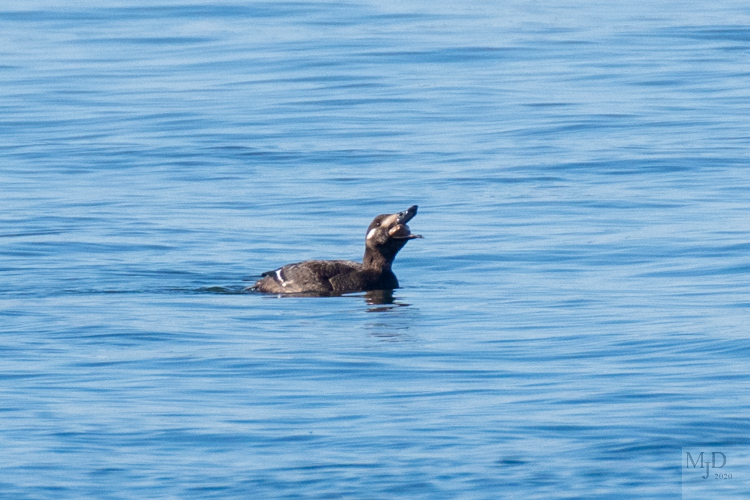
Our list:
Canada Goose (~ 85)
Gadwall (2) – Hellcat, marsh w. Bill Forward Pool (BFP).
Mallard (~ 20) – Hellcat, marsh w. BFP.
American Black Duck – common.
Common Eider (~ 60) – ~ 10, ocean seven; ~ 50, north end.
White-winged Scoter (~ 17) – 2, ocean seven; ~ 15, north end.
Black Scoter (3) – seven ocean.
Long-tailed Duck (~ 16) – ~ 12, seven ocean; 4, north end.
Bufflehead (1) – Stage Island Pool.
Common Goldeneye (3) – 2, seven ocean; 1, north end.
Red-breasted Merganser (2) – north end.
Horned Grebe (4) – seven ocean.
Red-necked Grebe (1) – north end.
Rock Pigeon
Sanderling (3) – seven beach.
Ring-billed Gull (3) – north end.
Herring Gull – common.
Great Black-backed Gull (1)
Common Loon (3) – north end.|
Northern Harrier (3) – 1, ad. female perched, Middens; 1, male over
North Field; 1, female moving across n. end S-curves toward dunes.
Red-tailed Hawk (1) – seen from north end over Salisbury.
Rough-legged Hawk (2) – 1, light morph perched at edge of marsh n. The
Warden’s; 1, light morph hunting over South Field/.
Blue Jay (1)
Horned Lark (~ 12) – Sandy Point.
Black-capped Chickadee (3)
Song Sparrow (2) – Hellcat.
Yellow-rumped Warbler (1) – Hellcat parking lot.


I was very happy to find this web site. I need to to thank you for your time for this wonderful read!! I definitely appreciated every bit of it and i also have you book-marked to check out new things on your blog.